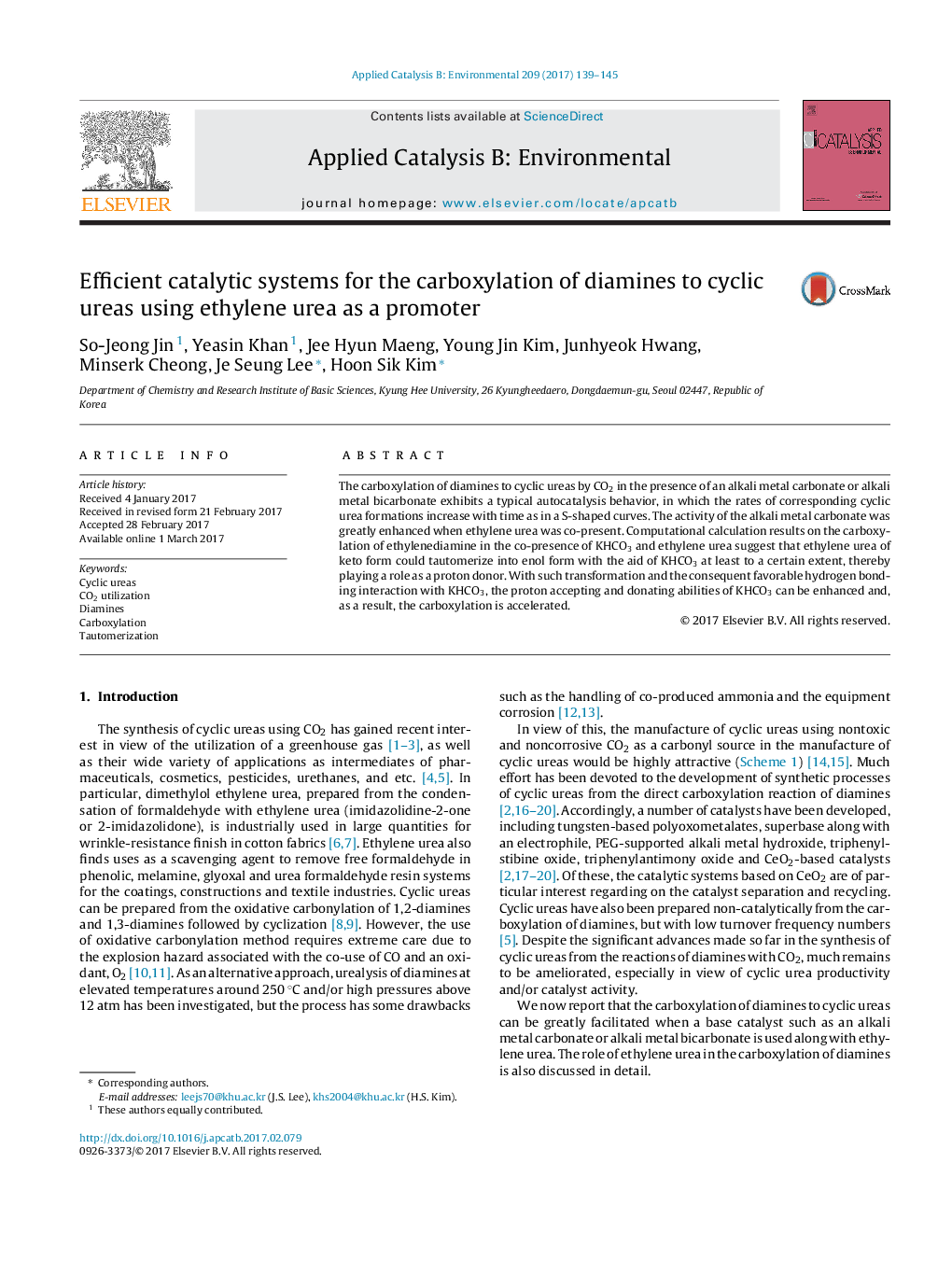| Article ID | Journal | Published Year | Pages | File Type |
|---|---|---|---|---|
| 6454141 | Applied Catalysis B: Environmental | 2017 | 7 Pages |
â¢Synthesis of cyclic ureas by the carboxylation of diamines with CO2.â¢Synergy effect of ethylene urea and a base in the carboxylation of diamines.â¢Mechanistic and computational investigations on the active species.â¢Effect of keto-enol tautomerization of ethylene urea on the activity of KHCO3.
The carboxylation of diamines to cyclic ureas by CO2 in the presence of an alkali metal carbonate or alkali metal bicarbonate exhibits a typical autocatalysis behavior, in which the rates of corresponding cyclic urea formations increase with time as in a S-shaped curves. The activity of the alkali metal carbonate was greatly enhanced when ethylene urea was co-present. Computational calculation results on the carboxylation of ethylenediamine in the co-presence of KHCO3 and ethylene urea suggest that ethylene urea of keto form could tautomerize into enol form with the aid of KHCO3 at least to a certain extent, thereby playing a role as a proton donor. With such transformation and the consequent favorable hydrogen bonding interaction with KHCO3, the proton accepting and donating abilities of KHCO3 can be enhanced and, as a result, the carboxylation is accelerated.
Graphical abstractDownload high-res image (80KB)Download full-size image
